Types Of Dog Brushes
Grooming your dog regularly helps minimize shedding, control where that loose hair falls, and improve the health of your dog’s
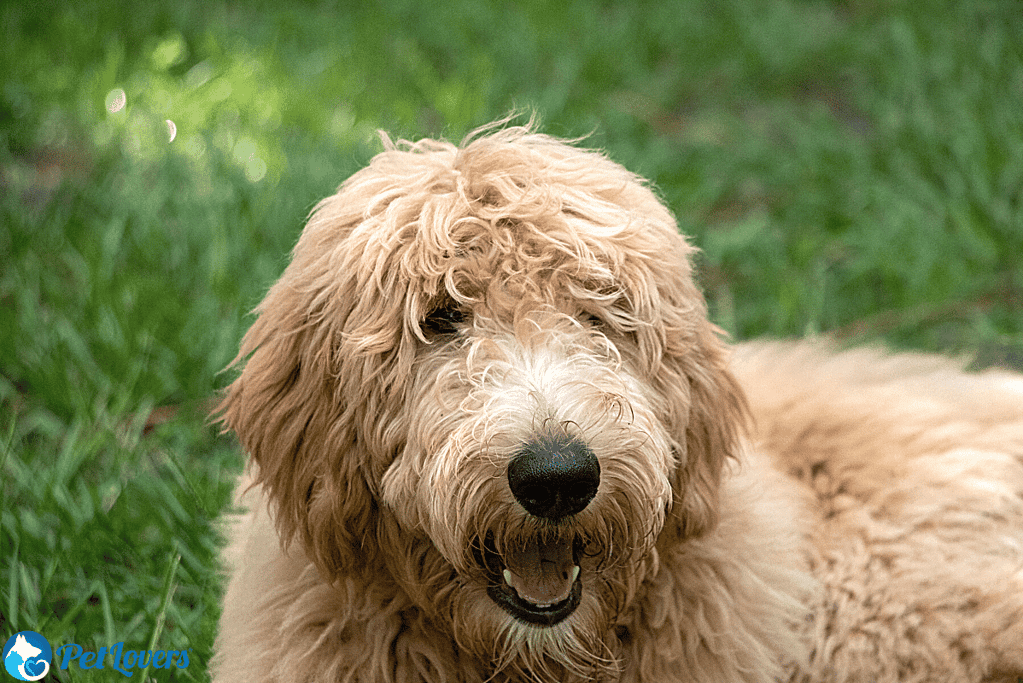
Dogs make the most wonderful pets, however, living with a dog that sheds too much can require a lot of maintenance. Running around the house with a vacuum cleaner to catch dog hair is the last thing any pet owner wants. Fortunately, there are dog breeds that don’t shed as much and won’t leave hair scattered around your house. We have created a list of big dogs that don’t shed that would be a great addition to your household.
Table of Contents
Contrary to what most people may think, no breed of dog is completely non-shedding. Shedding is a normal as well as a vital part of a dog’s life.
However, some dog breeds shed more heavily than others which can be quite troublesome for their owners or caretakers. Additionally, some breeds shed year-round, while some are seasonal shedders.
Though it is a misnomer to call any breed non-shedding, the term is widely used to refer to breeds that shed so little hair that it’s barely noticeable. Here are some big dogs that don’t shed:
As the name suggests, the Airedale Terrier is a type of terrier dog that was first bred in the valley of the River Aire, a major river in Yorkshire. It is the largest type of terrier with a height of 22 to 23 inches at the shoulder.
Traditionally known as the ‘King of Terriers’, the Airedale Terrier is both fluffy-looking and low-shedding. It has a rough topcoat and a smooth undercoat. As they have a wiry and hard coat, they require routine grooming and frequent coat care. The coat loses its shiny appearance and becomes soft without a regular grooming schedule.
Airedale Terriers were originally raised for swimming and are therefore quite nimble-footed. You’ll have to take them for a walk daily to keep them energetic and happy.
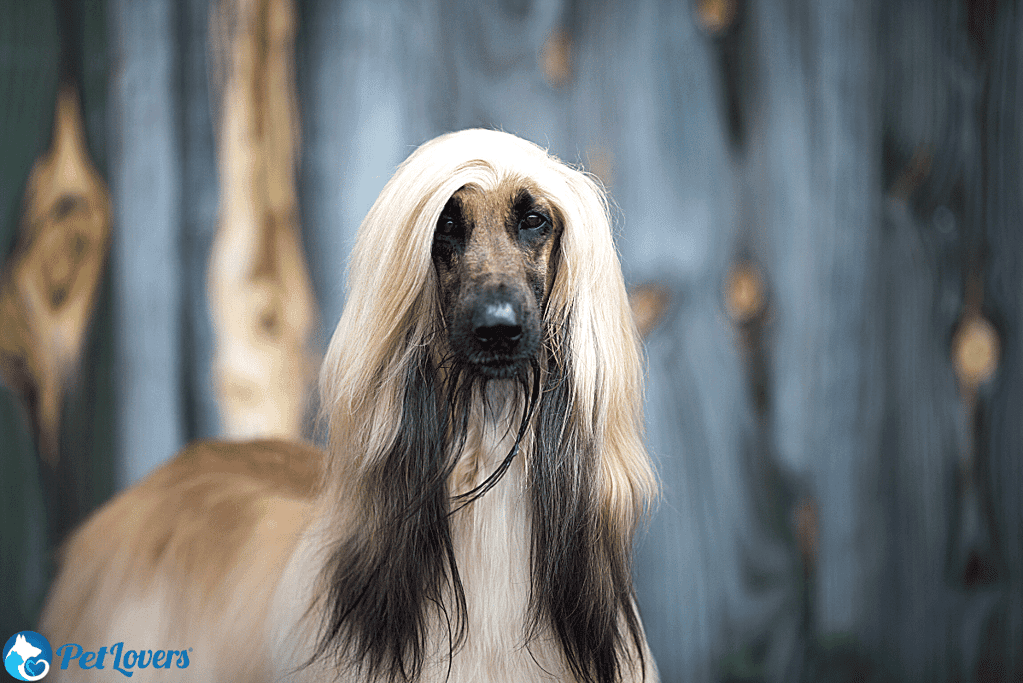
The Afghan Hound is a hunting dog with a dense, soft, and fine coat. The breed originated in the cold mountains of Afghanistan and was selectively bred for its distinctive traits, such as single-mindedness, agility, and ability to run long distances.
Like other non-shedding breeds, Afghan Hounds also undergo some degree of shedding. However, this breed sheds negligibly compared to other breeds. They have a long, mat-free coat with silky hair similar to that of humans.
You’ll need to bathe and brush them twice a week, and you can use a slicker brush to get rid of untidy mats and knots.
As the Afghan Hound is a reasonably high-maintenance dog, it is not recommended for first-time owners. Plus, they are not very trainable due to their stubborn nature. Male Afghan Hounds are as tall as 27 inches. Female dogs, on the other hand, stand 25 inches at the shoulder.
The Barbet is a medium to large-sized archetypal French water dog that comes in a broad array of colors, including solid black, brown, pale fawn, and gray. Brown or black-coated barbets often carry white spots on their paws, legs, chests, and chins.
They have a long, thick, and curly coat that grows quickly and needs to be groomed regularly. If you don’t follow a regular grooming regimen, the dog’s hair will become tangled in its coat and form untidy mats.
The best part about this breed is that they shed so minimally that you’ll hardly find a trace of dog hair on your clothes after hugging them. However, the barber’s fur does come out in clumps when it scratches itself or you brush it.
Though barbets have cheerful personalities, boredom can make them destructive. They are also quite obedient, intelligent, and perceptive. However, they require lifelong obedience training.
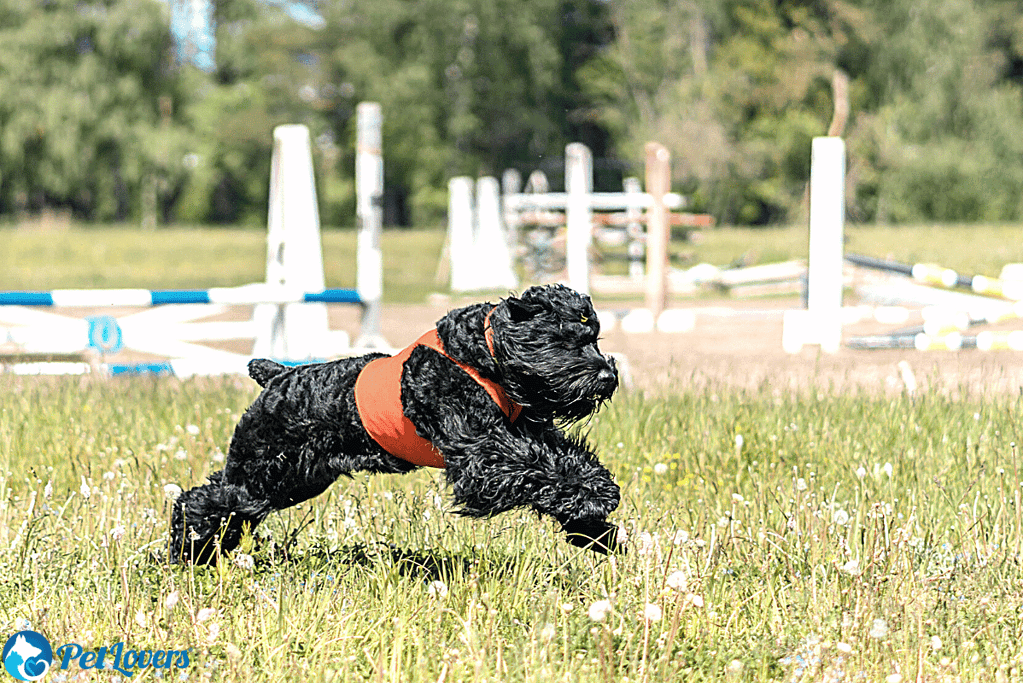
The Black Russian Terrier originated in the Soviet Union during the late 1940s and the early 1950s. The breed was originally raised for military purposes. Today, they make great companion dogs, guarding dogs, and working dogs.
Contrary to what its name implies, the Black Russian Terrier does not belong to the terrier class of dogs. It was created using about seventeen different breeds, including the Giant Schnauzer, the Newfoundland, and the Caucasian Shepherd Dog among other breeds.
They have a hard, thick, and wooly coat consisting of a coarse topcoat and a soft undercoat. The breed sheds minimally and requires high coat maintenance. During fall and spring, Black Russian Terriers shed for several weeks.
Male Black Russian Terriers have a height between 28 and 30 inches, while females stand as high as 28 inches at the shoulder. They are extremely smart, obedient, and confident. They need a lot of physical activity as well as mental enrichment to stay energetic.
The Bouvier des Flandres is a working dog that was originally raised for farm work in Flanders, Belgium. Once used for sheep herding, cart pulling, and cattle droving, Bouviers are used today as police and guard dogs.
They stand about 27.5 inches at the shoulder and have a rugged appearance with a dense, coarse coat. The breed sheds moderately and requires weekly brushing. Additionally, the coat of a Bouvier needs to be trimmed every three to five weeks, especially if it’s a show dog.
Bouviers are loyal, responsible, and fearless. They may look intimidating but are actually gentle and even-tempered. They are highly trainable and learn commands quickly. However, you need to limit repetition in their training as they can get bored easily.
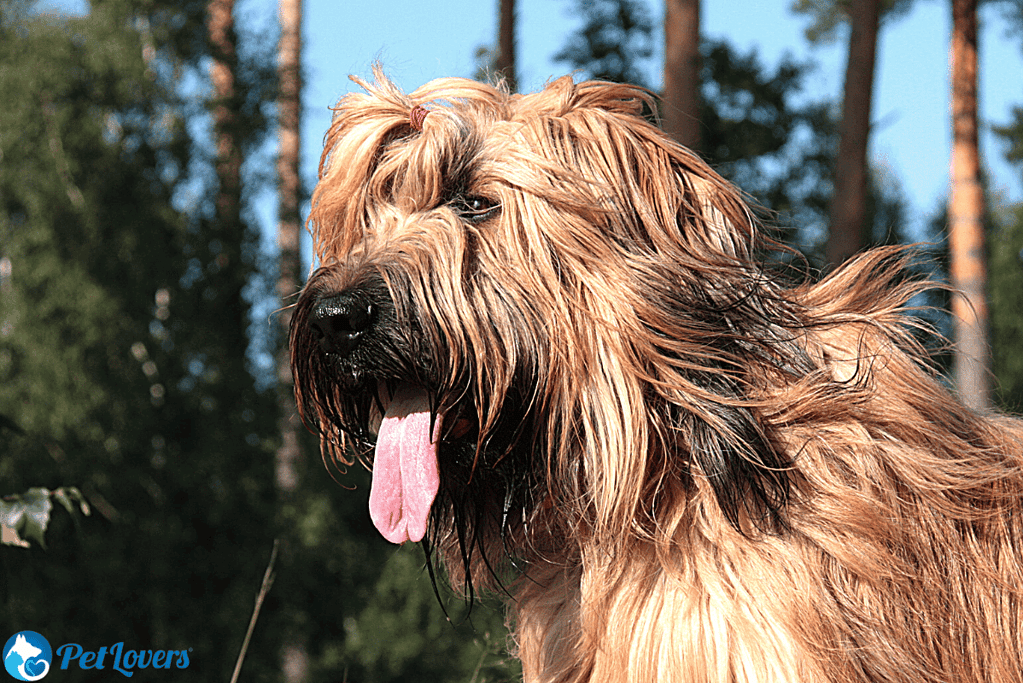
The Briard Dog is a large shepherd dog that originated in and is named after Brie, a historic region of northern France. It has a shoulder height between 22 and 27 inches.
It has a thick and hard coat similar to that of a goat. The Briard’s coat comes in a broad range of colors, including gray, solid black, blue, or fawn covered with black. Their outer coat can grow as long as six inches on average.
Due to their shaggy coat, Briards are often thought of as high-shedding dogs. However, they have roughly textured fur that sheds to a small degree. This low-shedding breed needs regular grooming as their coat is highly prone to matting.
Briards are amiable and playful in nature. They are super intelligent and always need to stay occupied. While they love spending time indoors, they also require socialization. This is especially true for younger Briards.
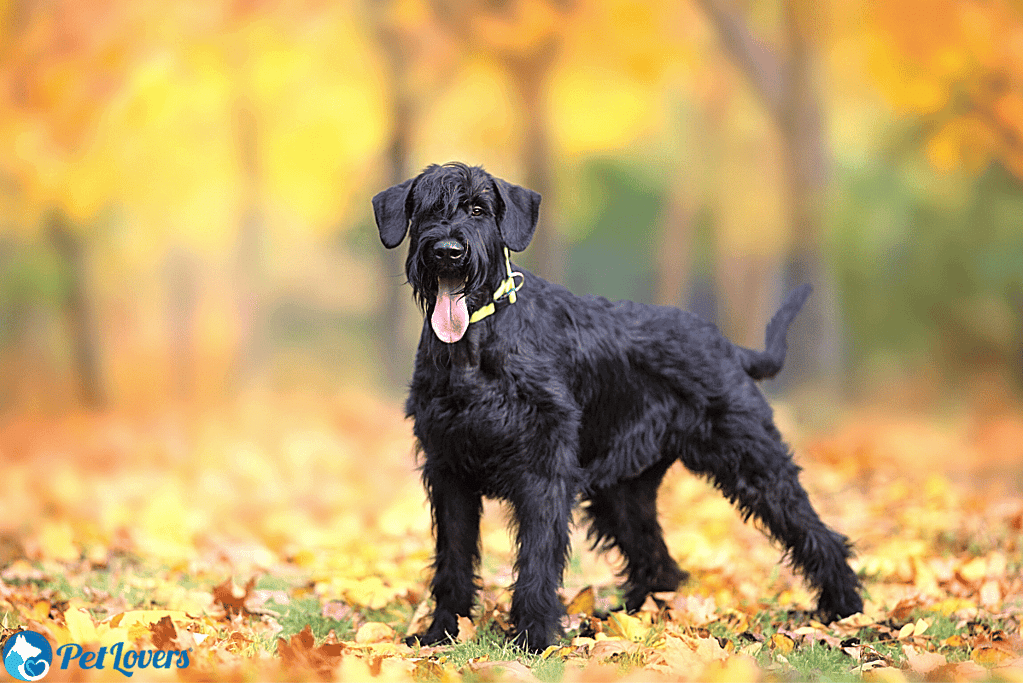
The Giant Schnauzer is a working dog that hails from Germany and was originally bred for farm work. It was developed using numerous breeds, including the German Pinscher, the black Great Dane, and the Bouvier des Flandres.
They have thick, wiry, and coarsely textured coat that defends their body against the weather and vermin. They come in three color types, namely pure black with a black undercoat, black and silver, and salt & pepper.
Giant Schnauzers have a shoulder height of about 27.5 inches and are the largest among the three breeds of Schnauzer. Although all types of Schnauzer undergo the same amount of shedding, the Giant Schnauzer may seem like the heaviest shedder as it has more hair on its body, compared to the other two types.
As far as grooming is concerned, this breed is relatively high-maintenance. Their beard, for example, needs to be cleansed frequently as it can accumulate food particles and drool. While Giant Schnauzers have a tender temperament, they can be quite territorial. They are a little reserved and chary of cozying up to strangers.
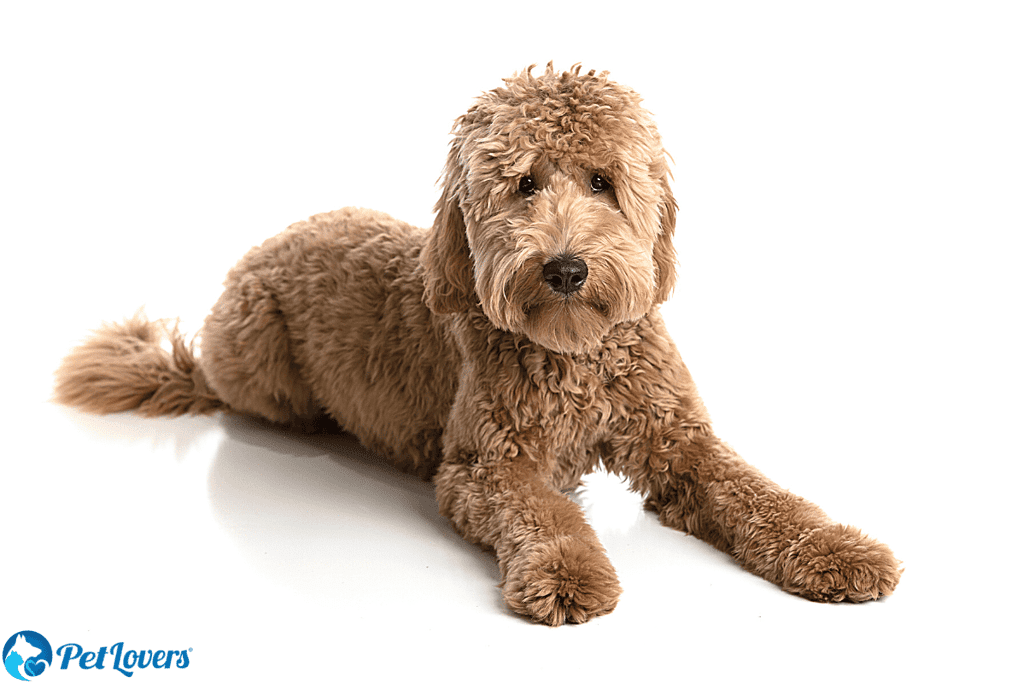
The Goldendoodle is a hybrid dog developed by the crossbreeding of the Golden Retriever and the Poodle. This designer breed first emerged in the 1990s and comes in three different size varieties. The Standard Goldendoodle is about 22 to 26 inches tall and has a thick and curly coat, resembling the coat of a Poodle.
This crossbreed is generally considered to be non-shedding. The amount of shedding a Goldendoodle goes through depends on the number of furnishing genes they inherit. They shed in lesser amounts than other breeds if they carry a single furnishing gene.
A Goldendoodle carrying two furnishing genes does not shed almost at all and is considered hypoallergenic. However, some allergy sufferers may still be allergic to it.
Seasonal changes also affect how often your Goldendoodle sheds. Goldendoodles that do shed undergo more shedding in the summer and winter. They are low-maintenance and require weekly brushing.
Goldendoodles inherit their friendly nature from Golden Retrievers. They also exhibit high trainability, intelligence, and sociability like Poodles.
SHOP PET HAIR REMOVAL PRODUCTS
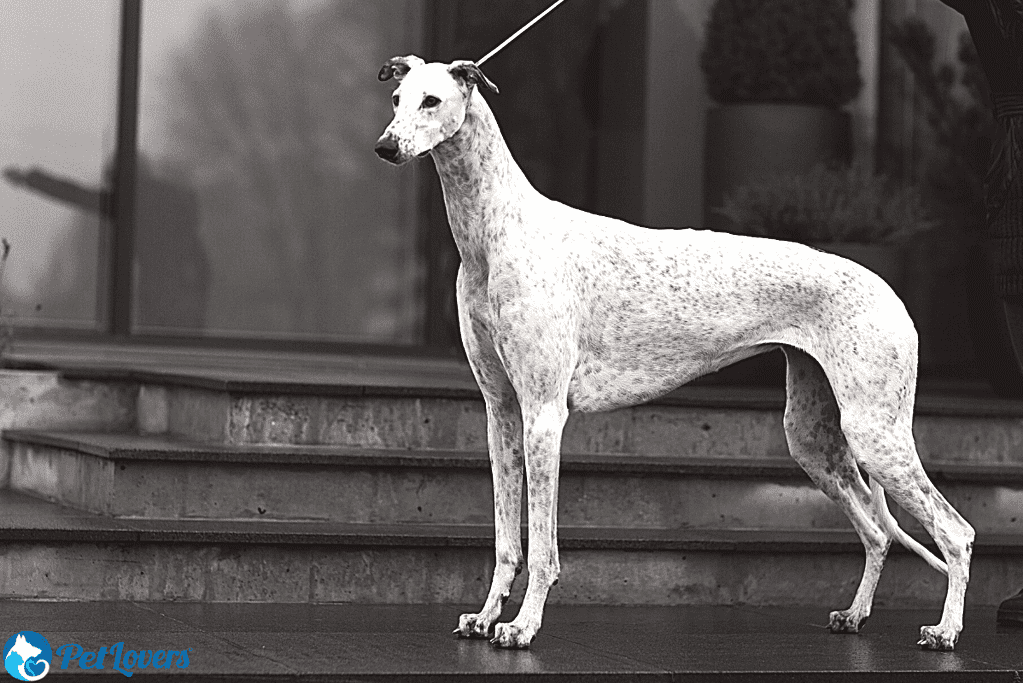
The Greyhound is a type of sighthound, a hound that uses sight and speed to hunt. The breed has been raised for hunting, coursing, and greyhound racing. They have become popular as family pets as more and more people are adopting retired racing Greyhounds.
Male dogs are 28 to 30 inches tall, while females have shoulder heights between 26 and 28 inches. The breed is low-maintenance as they have a short and soft coat. They undergo seasonal shedding twice each year – one at the beginning of the summer season and the other when the weather becomes colder again.
Greyhounds are very loving in nature and make great pets. As they have a sensitive nature, they must be trained gently. They are fond of quiet environments and can live happily as apartment dogs.
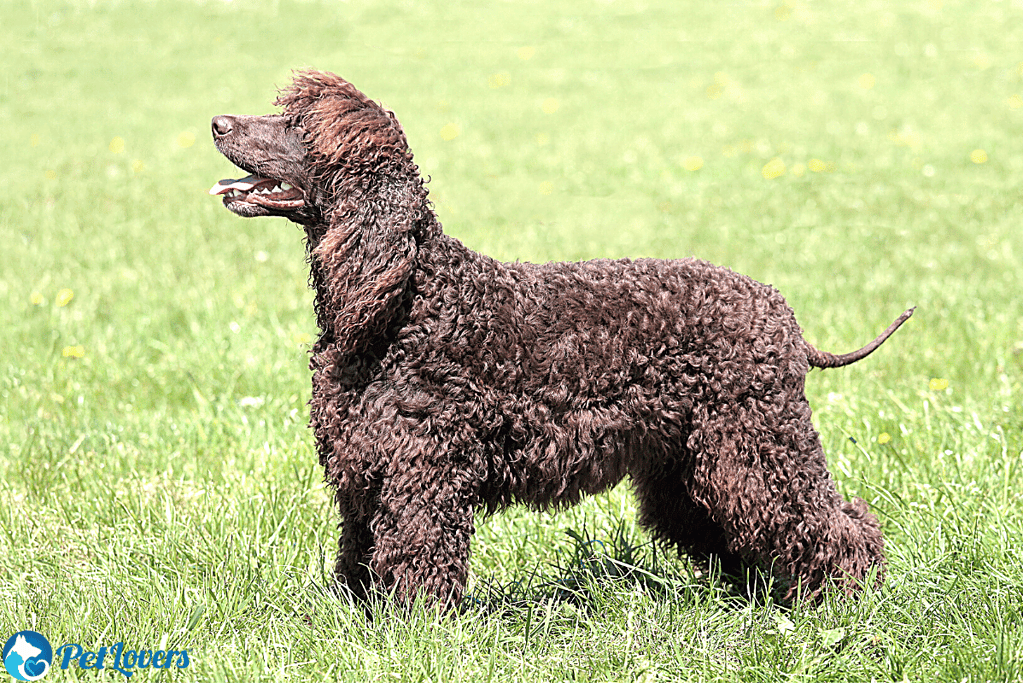
The Irish Water Spaniel is the tallest of the spaniels with males standing at 22 to 24 inches and females standing at 21 to 23 inches at the shoulder. The breed originated in Ireland in the 1830s and they make great family pets.
They have a dense, curly coat that sheds minimally. Even when they do shed, the hair gets trapped within their curly coat instead of falling off the dog’s body. This low-shedding breed requires regular brushing.
Irish Water Spaniels are inherently complacent. They are considered the clown of the spaniel family due to their quizzical nature and outstanding intelligence.
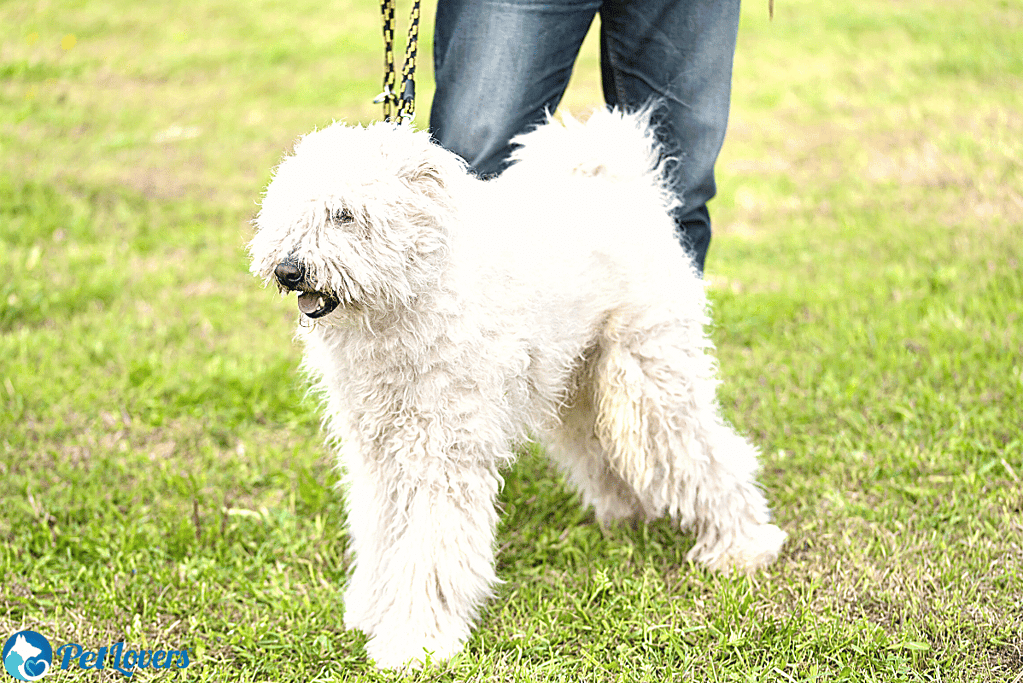
Komondor, widely known as the Hungarian sheepdog, is a breed of livestock guardian dog with a long, white-corded coat. As one of the larger breeds of dog, Komondors stand as high as 30 inches. They carry the heaviest amount of fur among all canids.
Younger Komondors carry soft and fluffy coats. As the dog matures, the coat becomes curly and forms tassels. The dog will turn into a dirty, matted mess if regular grooming is not performed. If you get a Komondor, you’ll need to bathe and groom it frequently.
Shedding is negligible with Komondors. However, when shedding occurs, you must separate the cords manually to prevent untidy knots and tangles. The Komondor has a caring and friendly personality, as it only gets aggressive when it senses trouble.
The Peruvian Inca Orchid is a rare breed of hairless dog indigenous to Peru. They can be coated or hairless. Coated Peruvian Inca Orchids have short coats with very little hair.
Hairless Peruvian Inca Orchids, on the other hand, only carry vestigial hair on top of their heads, on the tips of their tails, and on their feet. Both variants are non-shedding and make ideal pets for allergy sufferers.
The breed also has three size variants, namely small, medium, and large. Large Peruvian Inca Orchids are about 20 to 26 inches tall. Small Peruvian Inca Orchids stand 10 to 16 inches at the shoulder, while medium ones stand as high as 20 inches.
The breed is warm and affectionate with its owners but distrustful of strangers. They also tend to be friendly with other dogs.
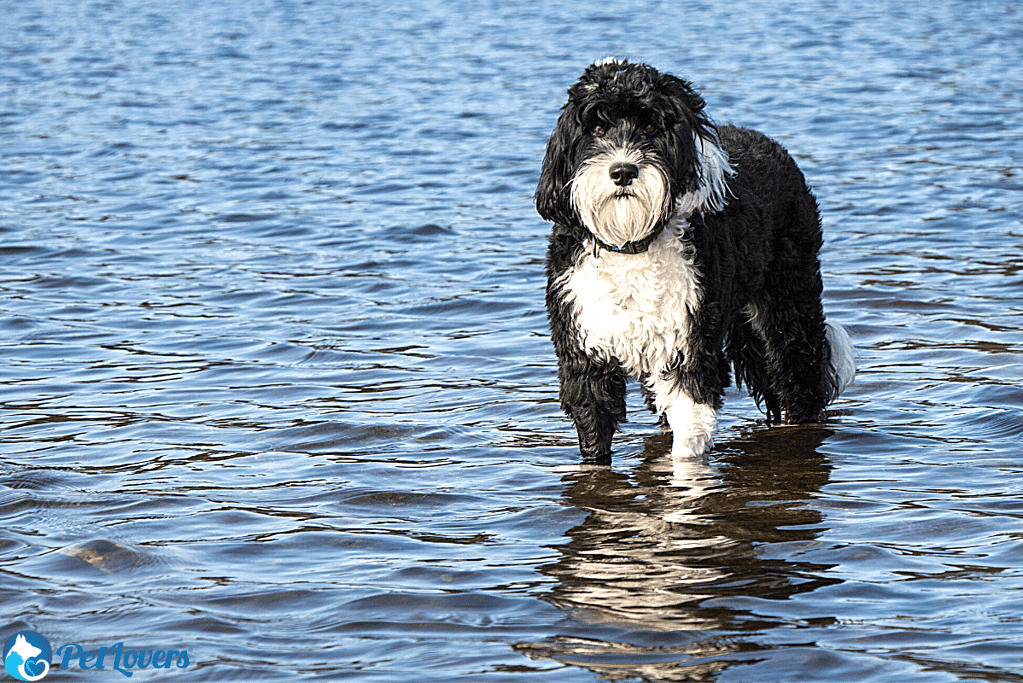
The Portuguese Water Dog is a breed of medium-sized dogs developed in the Algarve region of Portugal. The rare breed has a single-layered coat that can be curly or wavy. Curly coats are compact and matt, while wavy coats are lustrous in appearance.
PWDs are one of the lowest-shedding dog breeds. However, they are relatively high-maintenance due to their fast hair growth. Without regular grooming, their hair will grow indefinitely, forming mats and knots. They need to be trimmed every 6 to 8 weeks and their coat must be brushed daily or every other day.
The breed is super friendly and docile. They are also smart, independent, and agile. With proper training, they learn to follow complex commands.
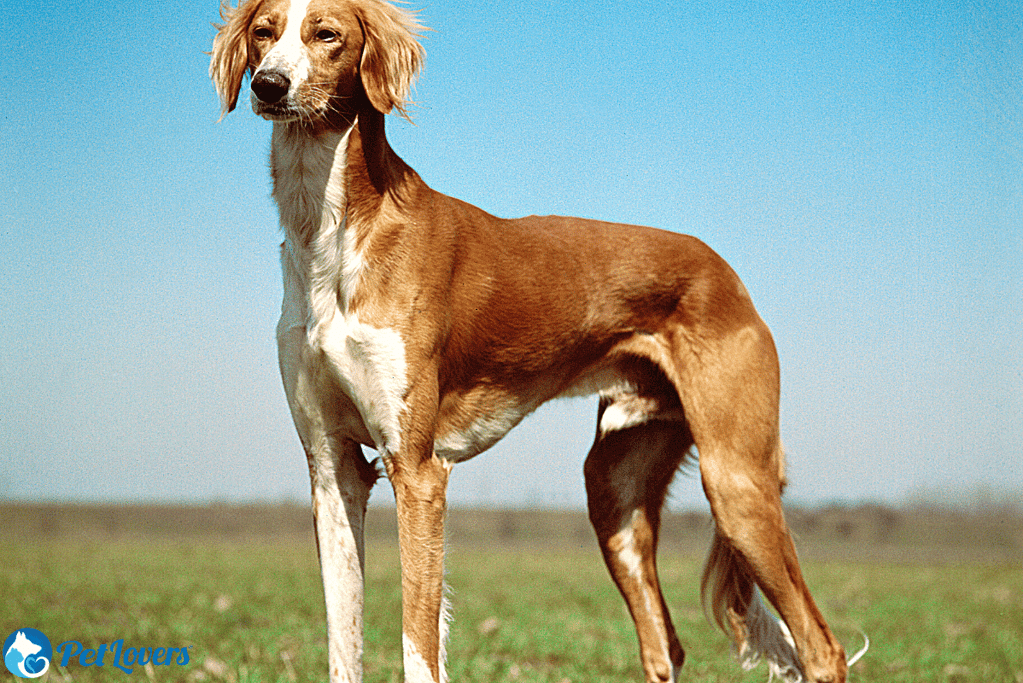
The Saluki is a breed of sighthound that hails from the Fertile Crescent, a boomerang-shaped region found in the Middle East (Mesopotamia). This breed is faster than the Greyhound over long distances.
Salukis have a graceful and highly symmetrical body. Their coats can be smooth or feathered, both of which are low-shedding. They don’t require much grooming or coat care. You can keep their coat in perfect condition by brushing them on a weekly basis.
Salukis are usually unapproachable and difficult to train. They need to be trained gently with persistent instruction. They are suitable for life in apartments. They get bored easily and should not be left unattended for long.
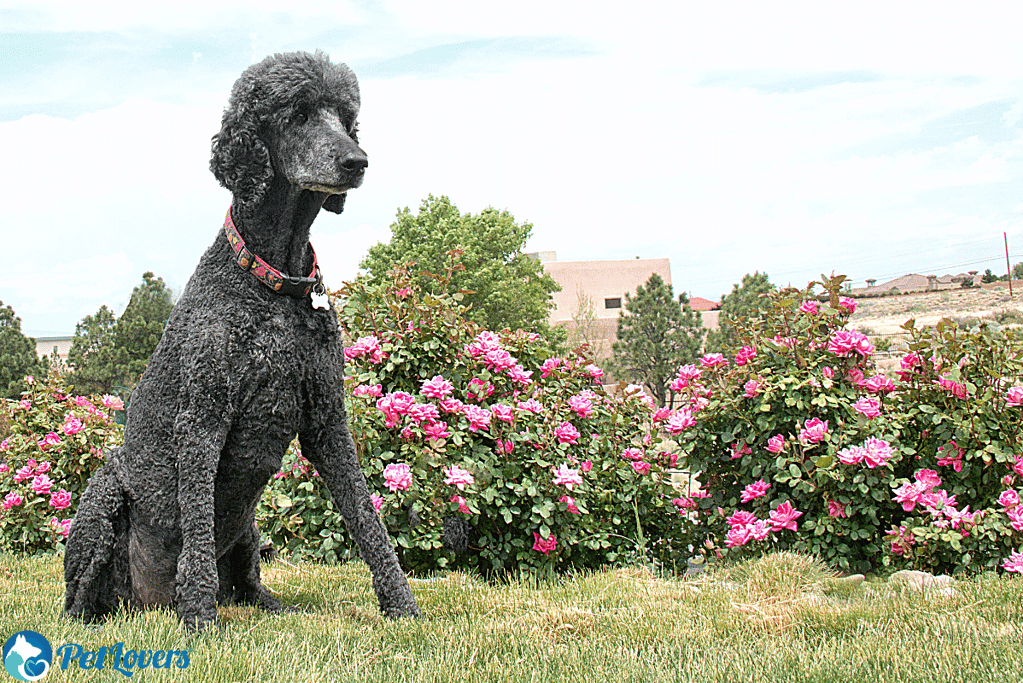
The Standard Poodle is one of the four size variants of a water dog breed that originated in Germany. They stand at 18 to 24 inches at the shoulder. Their coat is dense and curly with coarse hair.
They are not seasonal shedders like many other breeds of dogs. Standard Poodles have a fluffy coat and their hair gets trapped in the coat instead of falling out which is why molting is barely noticeable in this breed. The hair won’t fall out until brushed out. Standard Poodles need to be groomed every four to six weeks.
All Poodles are smart, companionable, and nimble. However, they can be a bit aloof with strangers at first. They are also very energetic and need regular physical and mental activities.
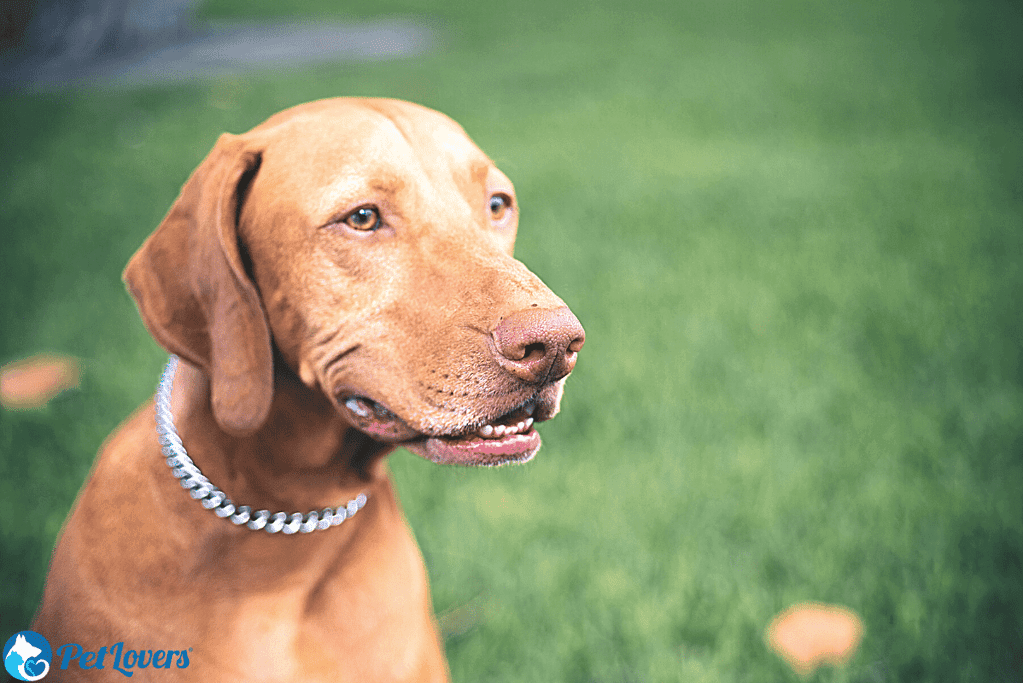
The Vizsla is a breed of sporting dog that was developed to work in water bodies, forests, and fields. The breed is medium-sized with males having an average height between 23 and 27 inches and females standing at 21 to 24 inches at the shoulder.
They have lean bodies with defined musculature. The coat is short, thick, and smooth and lies close to the body. They don’t carry an undercoat for insulation and therefore should not be left outside for long.
Vizslas shed moderately throughout the year. Because they are also self-cleaning, you will hardly need to bathe them. However, grooming should be performed every four to eight weeks to ensure their coat and skin is in tip-top condition.
They are very cordial even with strangers. They need constant attention from their owners and cry if they feel neglected. The breed can make great guard dogs if trained properly.
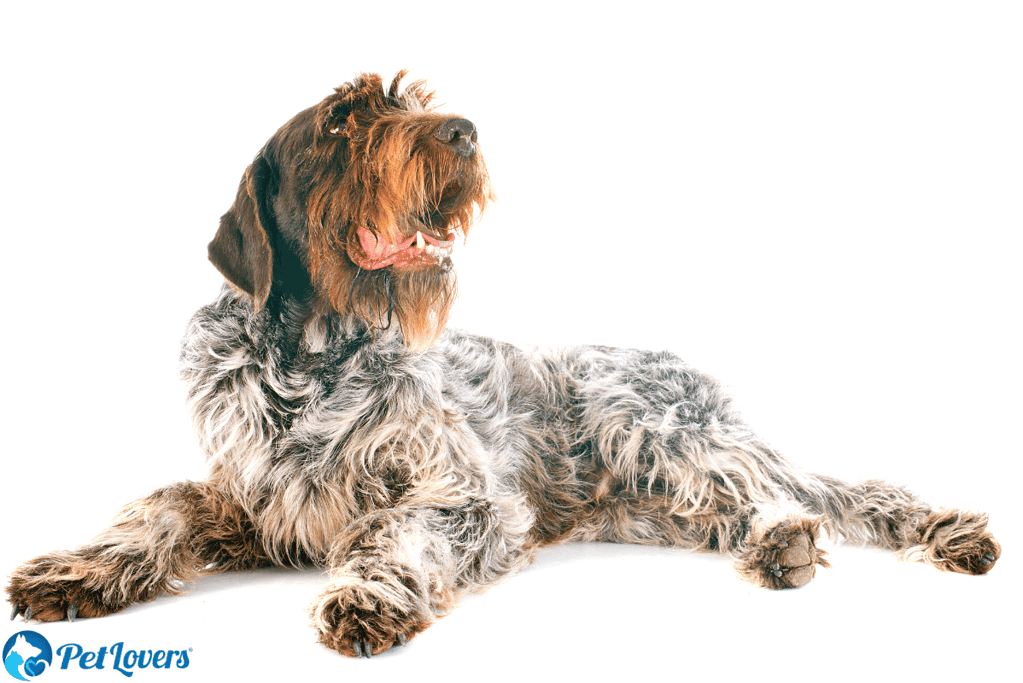
The Wirehaired Pointing Griffon is a type of hunting dog that helps hunters find and retrieve games. Males have a height between 22 to 24 inches, while females stand as tall as 22 inches at the shoulder.
They have a coarse, wiry outer coat and a soft undercoat. The coat comes in different color varieties, including steel gray with brown spots, white and brown, and chestnut brown. Though Griffs shed a moderate amount, you may notice some hair littered on the furniture or floor.
Griffons have a relaxed and convivial nature. Most Griffs don’t like living in kennels and prefer to stay around their owners. Despite their biddable nature, they only respond to gentle training methods.
Any of the above-mentioned breeds of dogs will make an ideal pet for you if you don’t want to run around the house, chasing dog fur. Shedding is a normal process that all breeds of dogs go through. Fortunately, there are many efficient tools such as pet hair removers and lint rollers that are easy to carry around and use anywhere you might find excess hair lying around. However, excessive shedding can be a symptom of an underlying disease. It’s important to get your pet checked by a veterinarian if you feel like it’s shedding more than usual.
SHOP PET HAIR REMOVAL PRODUCTS
Many low-shedding, hypoallergenic dogs make great family pets, including the Standard Poodle, the Black Russian Terrier, the Portuguese Water Dog, the Saluki, and the Vizsla.
There are many breeds of dog that never smell bad and are non-shedding, such as the Basenji, the West Highland White Terrier, the Dachshund, and the Maltese.
The Airedale Terrier is the biggest non-shedding dog. It is the largest of all terrier dogs.
The Basenji is a non-shedding dog that’s easiest to take care of as they only need to be brushed occasionally.
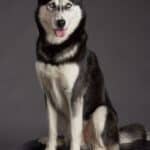 PetLovers
PetLovers
Grooming your dog regularly helps minimize shedding, control where that loose hair falls, and improve the health of your dog’s
Have you begun to notice a little more cat fur around the home than you are used to? Most cat
A slicker brush is one of the most essential tools in your dog grooming arsenal. This product can do it
TO GET 15% OFF ON ALL YOUR PURCHASES